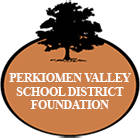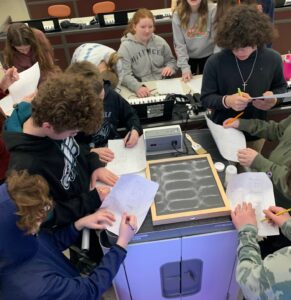
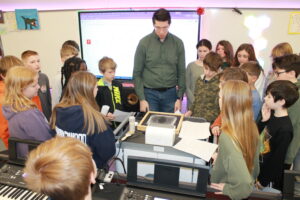

Chladni Plate
Have you ever wondered what sound looks like? It may seem paradoxical at first—after all, sound is something we hear, not see. Thanks to a fascinating scientific instrument called Chladni plates, we can now visualize sound in a way that transcends our auditory senses, opening doors to a new realm of understanding. This new realm of thinking and learning is precisely what Choir Director/General Music Teacher Trevor Sands had in mind for his sixth and seventh graders.
Chladni plates, a testament to the ingenuity of the German physicist Ernst Chladni, have been instrumental in our understanding of sound since their inception in the late 18th century. These plates, often crafted from metal or glass and coated with a fine layer of sand or other granular material, allow us to ‘see’ sound waves. When a violin bow or other sound-producing device is drawn across the edge of the plate, the vibrations create intricate patterns in the sand, revealing the otherwise invisible movements of sound waves. These plates are typically found in research labs and science settings…and now Perkiomen Valley Middle School West!
By observing the patterns formed on Chladni plates, students can gain a deeper understanding of the physics of sound, exploring concepts such as frequency, wavelength, and resonance in a tangible and interactive way. Imagine sitting in a classroom, watching as the sand on a Chladni plate dances to the rhythm of sound waves. As the pitch of the sound changes, so too do the patterns, providing a visual representation of how different frequencies shape the world of sound. Chladni plates offer a tangible representation of a concept that can be difficult to grasp through traditional means. While videos and lectures can convey sound physics principles, they often fall short in creating a meaningful connection with students. By contrast, Chladni plates provide a visceral experience that captivates the imagination and solidifies understanding in a way that words alone cannot.
This hands-on experience engages students and bridges the gap between music and science, fostering interdisciplinary learning and sparking curiosity about the interconnectedness of the two fields. By introducing students to sound physics and music technology through Chladni plates, we pave the way for a myriad of career paths, from sound engineering to acoustical architecture.
What students will study with a Chladni Plate:
- Cymatics – the study of transferring sound into a visual medium.
- Sound Architecture – how sound travels around spaces.
- Frequency and Harmonies of sound – as frequencies go up and harmonies are explored, the geometry and patterns of sound get more complicated
- Fluid dynamics – how sound travels through materials
- Science and sound career exploration – careers involving science, math, and sound.
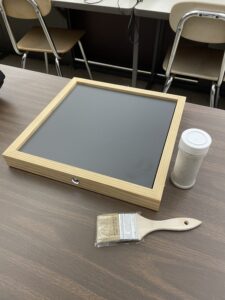
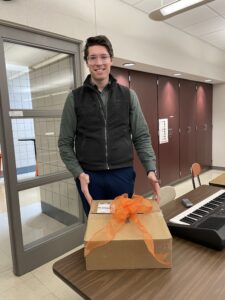
The students have loved using the Chladni plate because it really is one of the few ways to see sound. They are often amazed as to the patterns but also understand how it works and why it is important. The students always seem very interested and engaged when it comes to using the Chladni plate in the class. We discuss in class how sound and vibration has a significant impact on many things we don’t consider. Many students who are regularly not very interested in music class perk up when we talk about engineering, architecture, geometry, and how this area of sound physics is central to those topics. Students often want to explore more, and make comments about wanting a Chladni plate and seeing how it reacts to their own music.

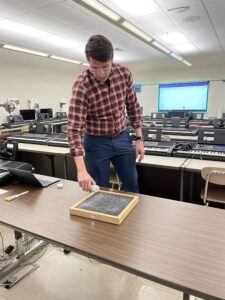
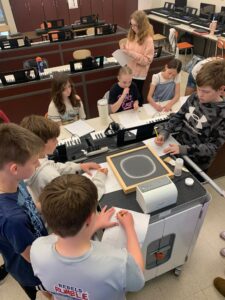
Support Projects like Chladni Plate
Teachers don’t always have access to materials, technology, and other resources that can make the difference between a lesson that is forgotten the next day and one that lasts beyond graduation. That’s where you come in. Your contribution to the PVSD Foundation helps ensure that the Foundation can continue to support teachers in delivering enriching educational opportunities for all students when tax dollars and traditional revenue streams fall short.
